(Also please note that the author has asked for this thread to be locked and can be discussed in another thread should you want.)
Thought I'd post this in the fishing section since this happens when we are out fishing the more remote areas. Always start with the easiest way to get unstuck and work your way up till your out. This can be applied to an Atv too by using a Block with your winch. This is not the only way to do it but it gets you thinking on how to get safely off the ice again. If this helps one person then it was worth the read.
Winter travel on lakes and river is a great way to get around until the conditions turn to slush. With heavy amounts of snow on the ice it pushes the ice down and water comes up soaking the snow and turning into dangerous slush.

Travel can be less than favourable. Slush can grab a snowmobile and hold it making escape next to impossible. Sometimes when you get into slush the farther you go the worse it gets until your stuck.
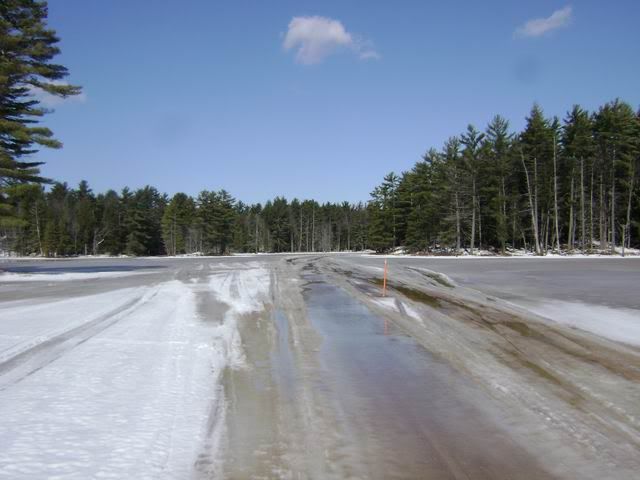
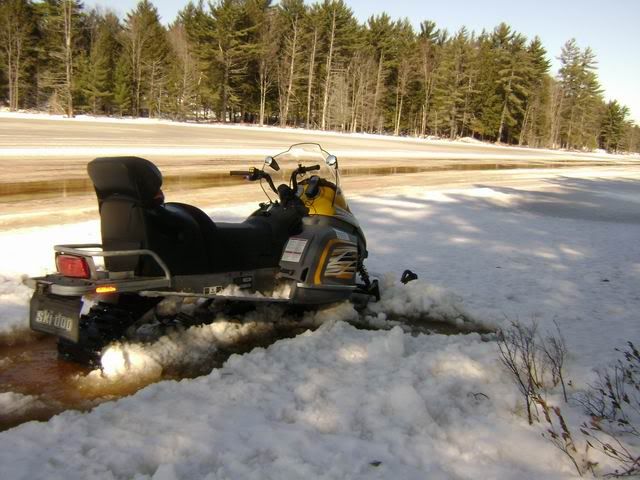
I decided to do a simulation on being stuck miles form any where. Being prepared can make the difference in spending the night in the wilderness. I also carry a small amount of survival.
I carry a small fanny pack with some ice rescue gear I have put together. I carry a throw bag with 70’ of floating rope. (floating rope doesn’t absorb water) One ice climbing screw. 5 carabiners. Two straps. One folding saw. One hatchet. One Avalanche Shovel.
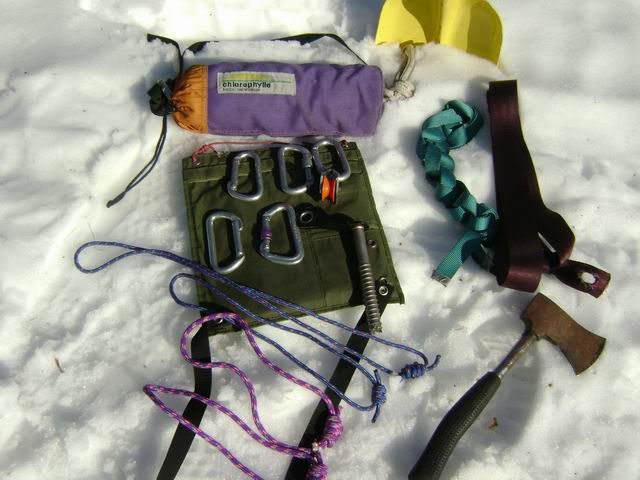
This gear can fit into a small fanny pack or knapsack. Most of this stuff fits under my snowmobile seat. The shovel comes apart for storage too. You can modify the tools for yourself. The importants of a shovel or hatchet is to remove slush from your track before it freezes.

We next have to think about anchors. If your close enough to shore you could anchor off to a tree, rock or anything fixed. On the ice you need to create an anchor. It could be a hole augered or chopped in the ice to put a tree branch down or a trench dug in the snow with a branch about the size of your arm laid down in it. Always pick green wood as it is the strongest and won’t break when force is applied.
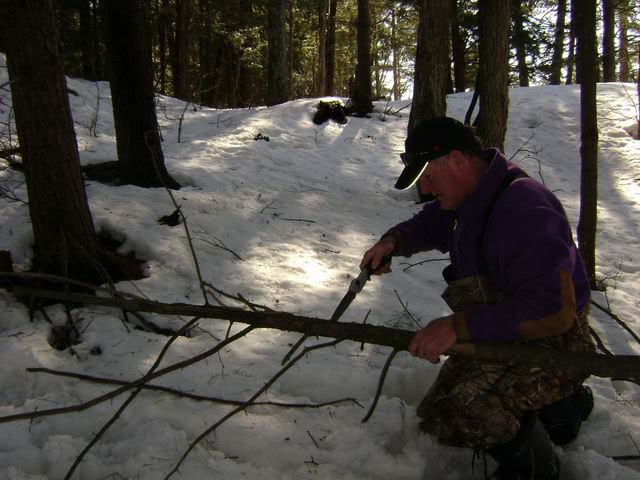
Try to keep from walking in front of the trench you are going to use for an anchor. Also try not to walk in front of the snowmobile as it can give you a better base. Some times you need to let the trench set up for an hour.
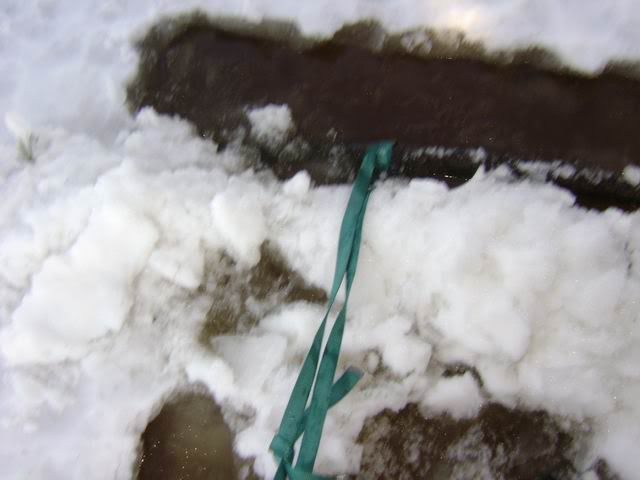
The next thing is to tie your rope on to your snowmobile. Try to pick a good anchor point so you don’t rip something off when force is applied. You could also think of removing the drive belt so the track will turn instead of dragging.
I use a figure 8 knot.
http://www.animatedknots.com/fig8follow ... rog.jpg&We bsite=www.animatedknots.com
The important thing about the knots I used is they can all be untied after loading has been applied.
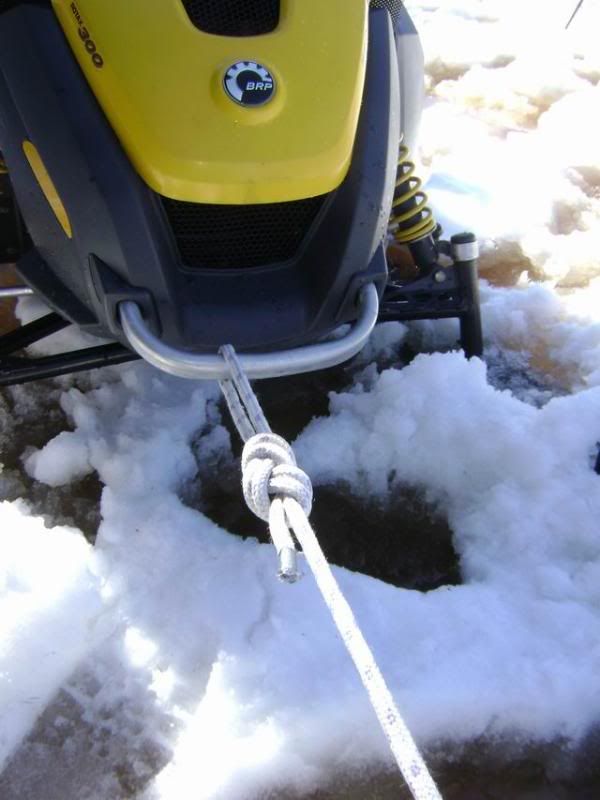
Now you run the rope to your anchor. For now the anchor is a log buried in a trench with a sling running off it.
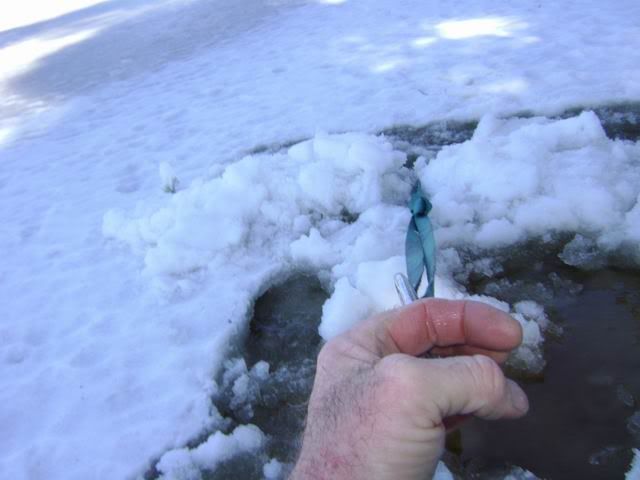
Now the rope is tied to your snowmobile and the other end is running to the anchor. I attach a carabiner to the sling for the rope to go through. If you try to pull the snowmobile it won’t move. You run the rope through the carabiner and back toward the snowmobile. I now take a loop of rope. I make the loop by tying a double fisherman knot.
http://www.animatedknots.com/doublefish ... rog.jpg&We bsite=www.animatedknots.com
The loop is now attached to your main line by a Prusik knot. This is a one way locking knot.
http://www.animatedknots.com/prusik/ind ... rog.jpg&We bsite=www.animatedknots.com
The rope for your prusik knot must be smaller diameter than your main line. So this knot will lock when loaded and slide when the weight is taken off.
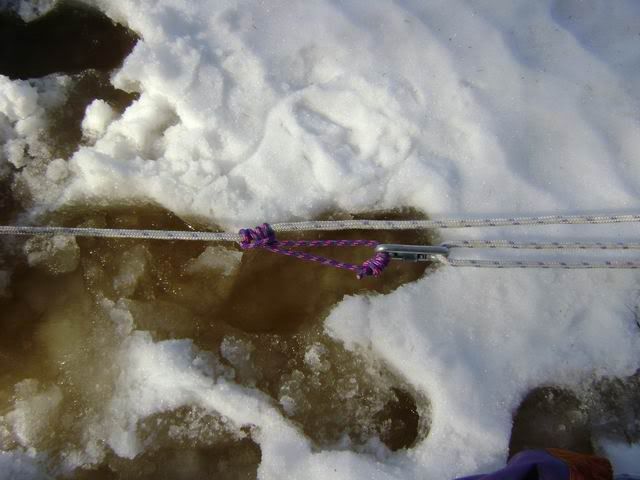
Now you run the line back to your anchor point on the ice. I add a second carabiner to the webbing.
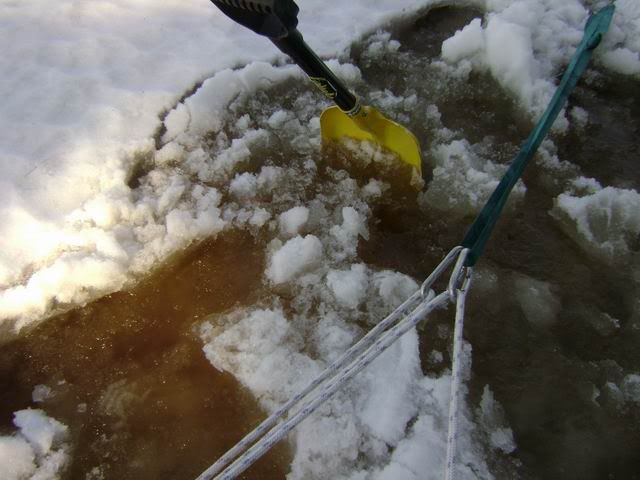
You now run the line back toward the snowmobile and attach another prusik and carabiner
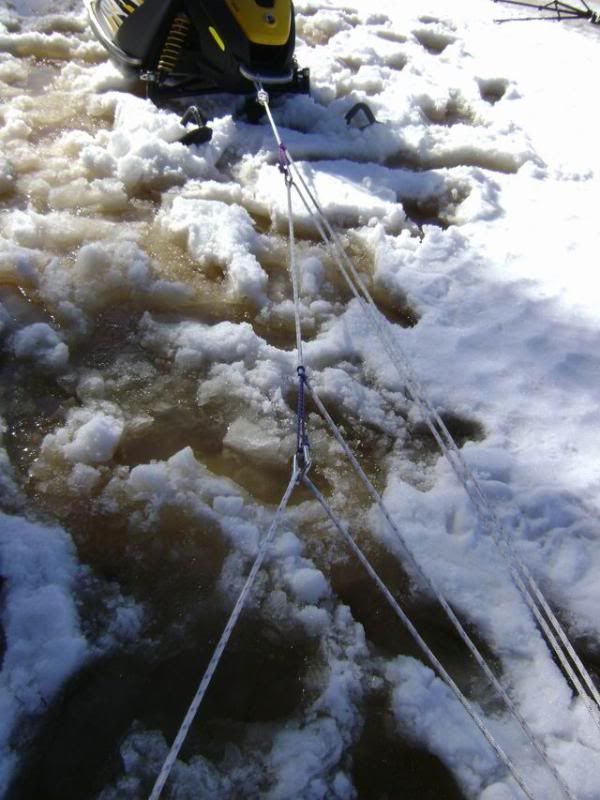
Try to keep the ropes in line and not tangled.

So now we start pulling on the rope. This gives you up to a 9 to 1 advantage. This can also create a lot of force on the anchor on both ends so be careful. I have seen boulders the size of cars move and bumpers on snowmobiles ripped off.
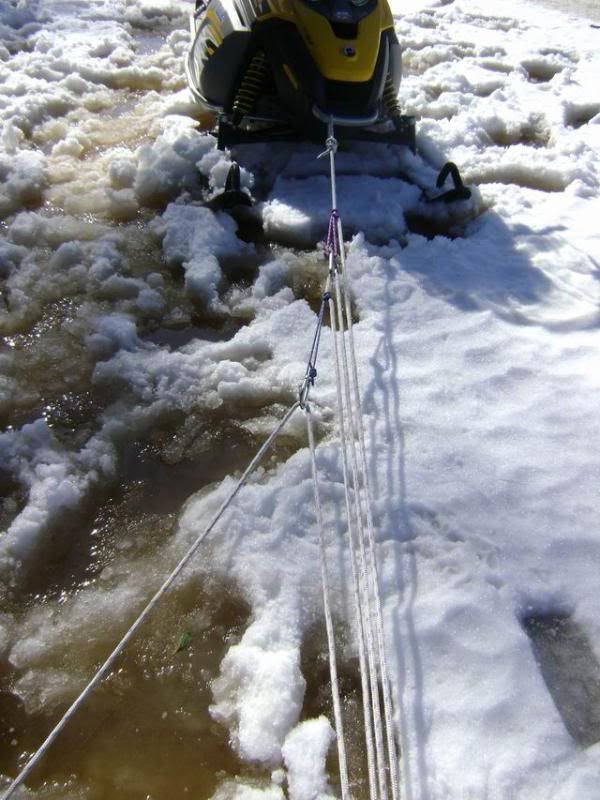
So everytime you go through a pulling sequence you need to reset your prusiks. You let the tension off and slide the knots toward the snowmobile giving you room to pull again.
Now there are a few things you can do once it starts moving. You can precut some logs to put under the track and skis to give you a solid platform to work from . You can also leave the snowmobile up on this platform out of the slush and wait until the temp drops and the lake firms up.
I feel you should pull the snowmobile towards shore so you can get it off the lake on solid ground. Once you get it up and moving make sure to shovel out all the slush out of the track. This can stop your track from turning and burn your belt out.
So now lets change direction and get it back on solid ice toward the trail.
I put a new anchor in the ice (ice screw)
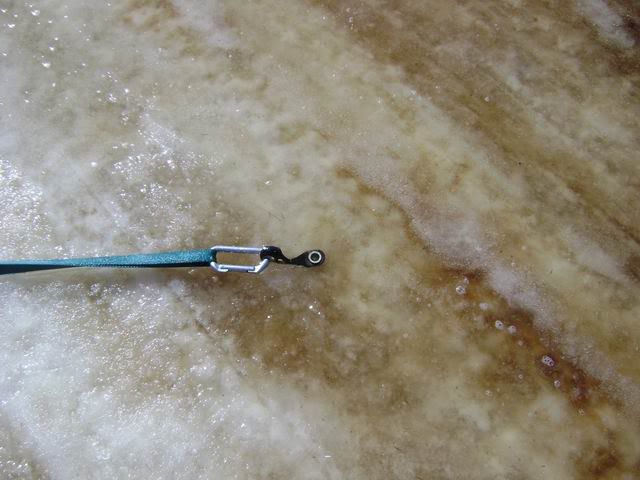
I turn the skis in the direction I want the sled to go and start the pulling sequence again.
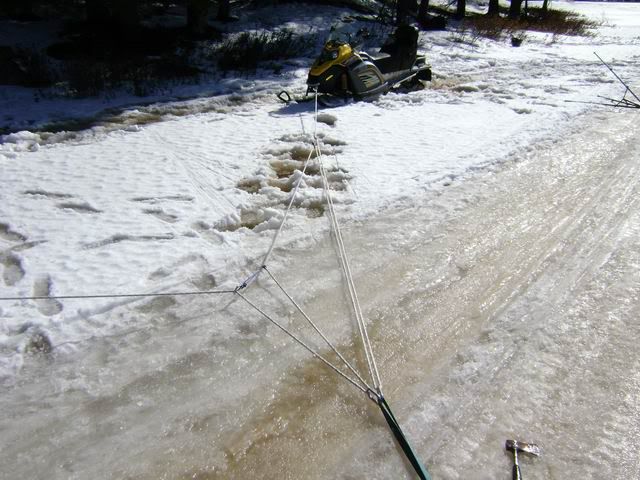
As the snowmobile starts to move it gets on better ice.
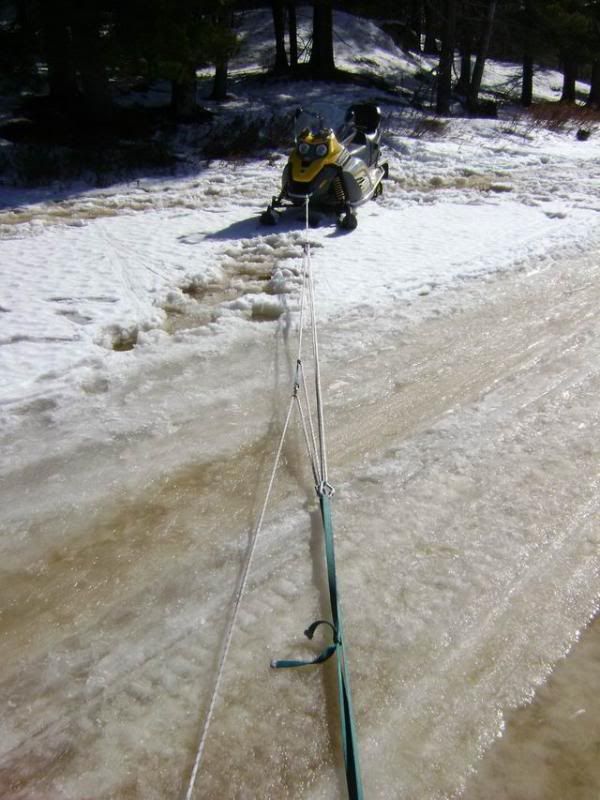
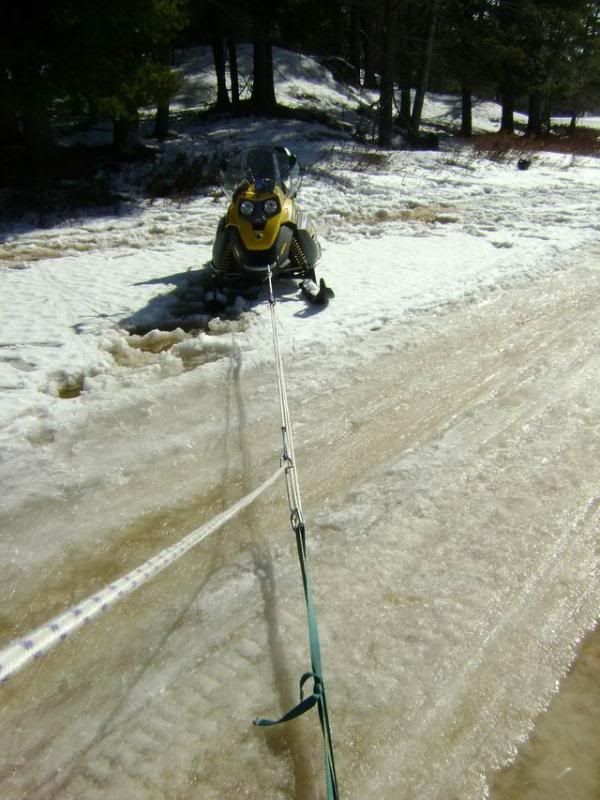
And one more pull
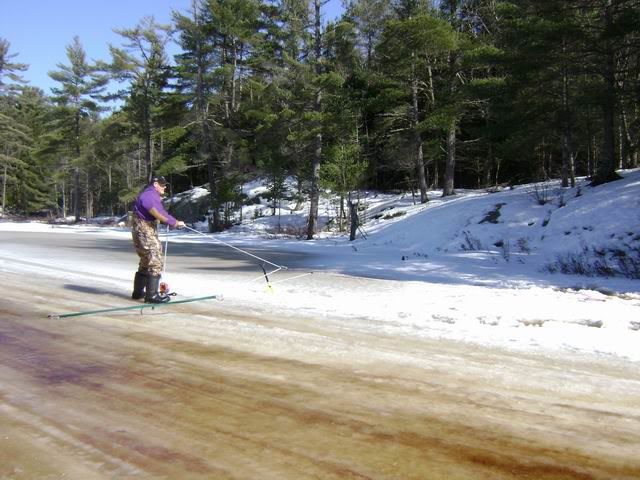
We’re back on solid ice and out of the slush.
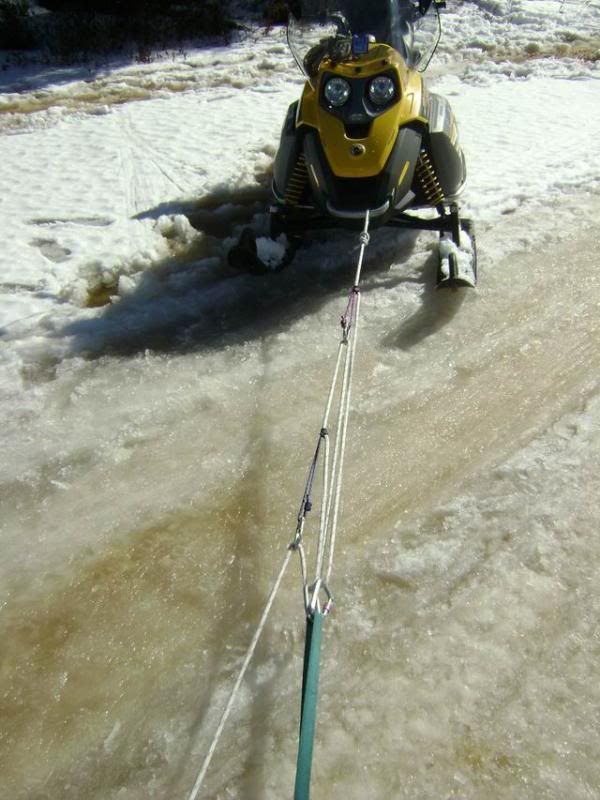
So now I would check for any damage. Put my belt back on if I had taken it off. And were ready to go again.
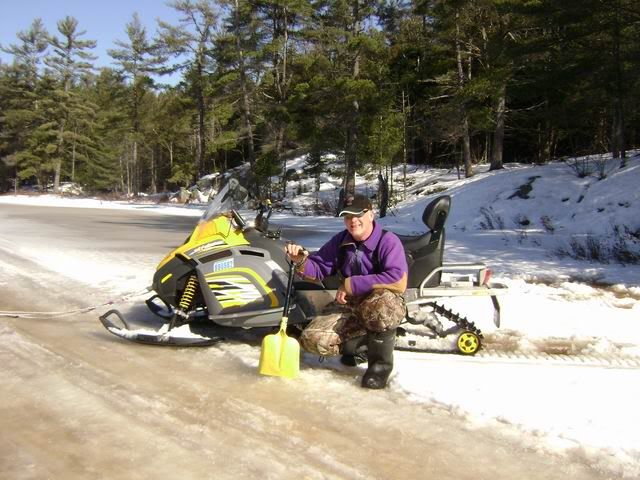
There are several modifications to this system but this works for most things. You may need to make a tripod out of some logs to run the rope over about 4’ in front of the snowmobile. This lifts the snowmobile up due to the height of the rope and the angle it is now pulling from. This is more if the snowmobile has gone through the ice but is not sunk.
The good thing about Ice Climbing Screws is they are fast to get into the ice. You must put them all the way in or they may break. These are no designed to act as horizontal anchor but it works. Also I keep a screwdriver to clear ice from the centre of the screw when I remove it. If it freezes in the tube it won’t screw in again until the ice is removed.
So this is a system that has worked for me. Being prepared and thinking outside the block can get you out of tough situations. I do a lot of solo excersions into some real wilderness areas and need to have the skill to get myself out of any emergency when they arise. There is no one coming to help.
I hope this gives you some ideas on how to do Self Rescue
RR

